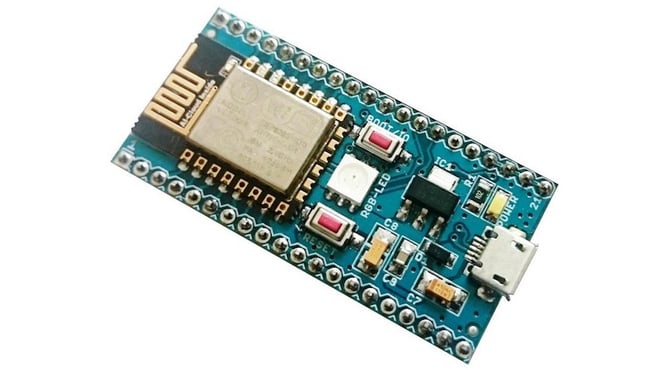We're big fans of the ESP8266 chip. What's not to love about a low-cost Wi-Fi chip with full TCP/IP stack and microcontroller capability? Let's take a look at some of the top options currently available and explore the major differences.
After first coming to the attention of western makers just a couple years ago with the ESP-01 module, the ESP8266 has exploded thanks to improved capability and documentation. Here's a list of our favorite ESP8266 development boards currently available. ESP8266-based modules work great with Losant. You can check out other boards as well on our list of supported hardware.
- Adafruit Feather HUZZAH
- NodeMCU Dev Kit
- KNEWRON smartWIFI
- SparkFun Thing
- WeMos D1 mini
- Wio Link
Intuitive All-Inclusive Workhorse
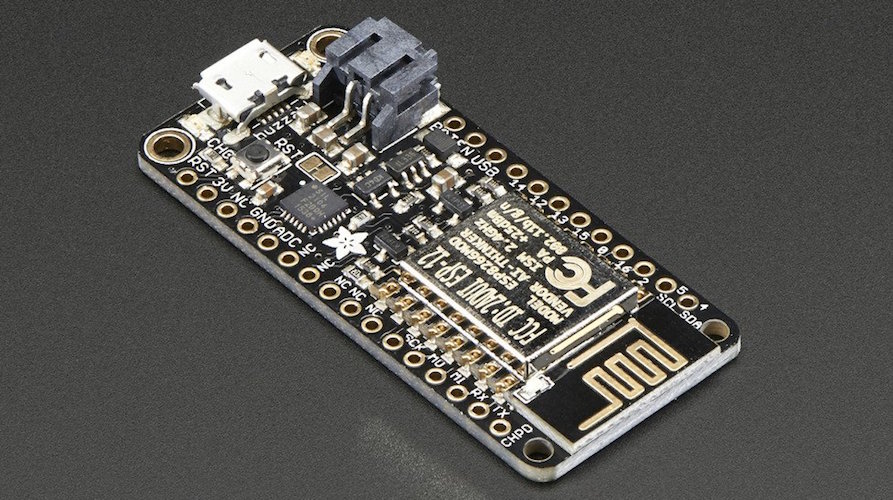
Out of all the modules on this list, we've spent the most time with Adafruit's "thin and light" Feather HUZZAH. There's a good reason we chose it for our Losant Builder Kit to introduce our platform back in February. It's also the "Wi-Fi Workhorse" in our list of best maker hardware.
For a price on the high end of this list ($16 directly from Adafruit), you get an 80 MHz microcontroller with 3.3V logic, a full Wi-Fi stack and a battery connector for added portability. Most importantly, it's simple to set up and we've seen nothing but reliable and predictable performance. We recommend programming it via the Arduino IDE.
Of all the ESP8266-based boards available, this is one of the best in terms of intuitive setup and thorough instructions and documentation. Highly recommend starting with the Feather HUZZAH to get your bearings, then trying some of the cheaper options that offer a less intuitive setup.
The only concerns with the Feather HUZZAH is availability and soldering. It tends to go on backorder more often than others (currently out of stock at the time of this post), assuming due to its popularity. You also have to solder the headers, so be prepared to get the iron out.
Benefits
- Intuitive setup with great instructions and support
- Ships quickly (when in stock)
- LiPo battery connector
Affordable Open Source Reliability
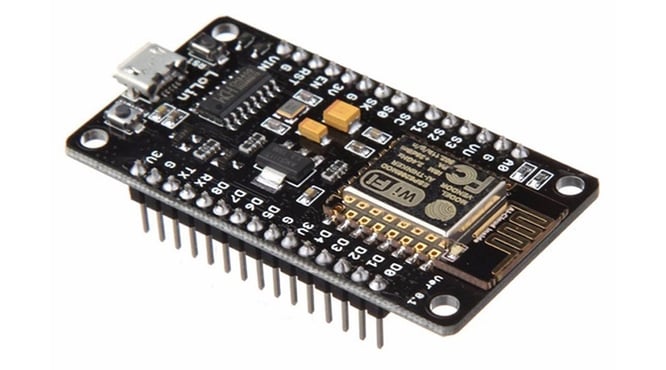
As open source advocates, we like the NodeMCU platform a lot. We're using a NodeMCU ESP8266 in some of our projects and it's been reasonably solid and predictable, especially given the low cost. You can check it the NodeMCU in action in our Getting Started with PlatformIO and NodeMCU guide.
NodeMCU is an open source IoT platform that uses the Lua scripting language. It's based on the eLua project, and built on the ESP8266 SDK. It uses many open source projects, such as lua-cjson, and spiffs. It includes firmware which runs on the ESP8266 Wifi SoC, and hardware which is based on the ESP-12 module.
There are numerous choices for NodeMCU dev boards and they're readily available from online retailers like e-Bay and Amazon ranging from around $4-9. Thanks to a robust community, the documentation is also very good.
The form factor on this module is also good. Though slightly wider than the Feather HUZZAH, it still manages to expose a similar number of rows on your breadboard.
Benefits
- Most affordable standard size ESP8266
- Multiple options available
- Open source, good documentation
More Affordable
The KNEWRON SmartWIFI out of India is another inexpensive ESP8266 dev board with solid features and capabilities. For just $9, you get integrated Wi-Fi, a LiPo battery charger, user button, RGB LED and most notably - fairly straightforward setup. SmartWIFI provides a fairly simple experience with a good getting started guide and detailed documentation.
Benefits
- Inexpensive
- Simple setup with good instructions and documentation
Reliable and Familiar
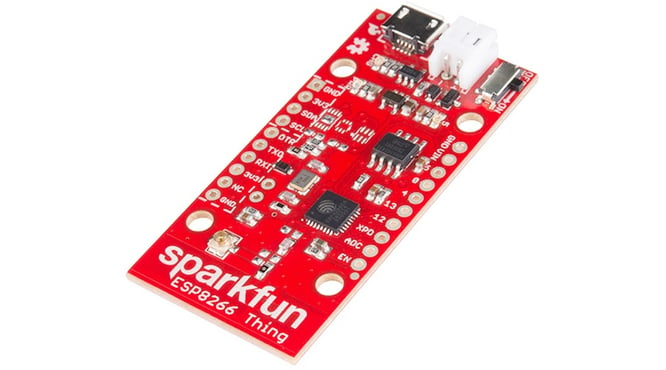
The SparkFun ESP8266 Thing is similar to the Feather HUZZAH in price, features, form factor and setup. For $16, the Thing comes with integrated Wi-Fi, LiPo battery charging, LED, user button and very good setup and documentation.
Reliability and predictability are great as you would expect coming from SparkFun. The key differences between the Feather HUZZAH are that the Feather HUZZAH setup is a bit more intuitive and the flash is a bit beefier. However, for most applications the difference in flash shouldn't matter.
Like the Feather HUZZAH, the Thing ships unsoldered. The Thing should also have better availability and fewer backorder / shipping issues vs. Feather HUZZAH.
Benefits
- Great instructions and support
- LiPo battery connector
- SparkFun reliability / availability
Best Bang for the Buck
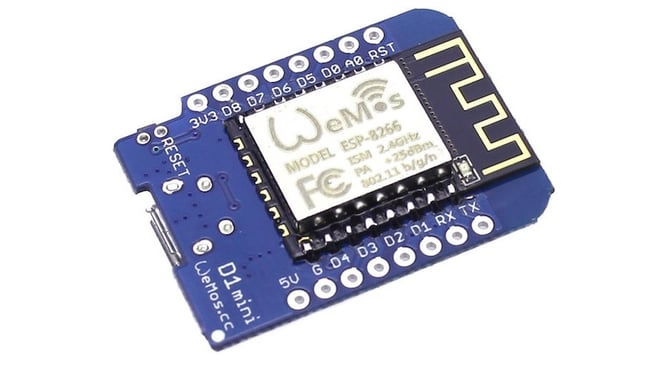
The WeMos D1 mini out of China is a great ESP8266 dev board for simple projects, offering a fantastic bang for the buck at just $4. Though it's a "minimal" dev board, you have everything you need to build a basic Wi-Fi enabled project, including integrated Wi-Fi, sufficient flash and decent number of GPIO pins for the size.
When you don't need LiPo battery power or an LED and want to build a project as economically as possible, this is no question the ideal option. In addition, the form factor is as small as you can get for a Wi-Fi enabled ESP8266.
Fortunately, instructions and documentation aren't "minimal." Simple setup, good documentation and solid reliability have helped the WeMos D1 mini become a popular go-to board. Special thanks to Martin Ayotte and the ESP8266 Community Forum for telling us about this gem. Just got a handful in and we're already cooking up some projects for them.
Benefits
- Cheapest integrated Wi-Fi available
- Simple setup with good instructions and support
- Smallest form factor available
No Breadboard, No Problem
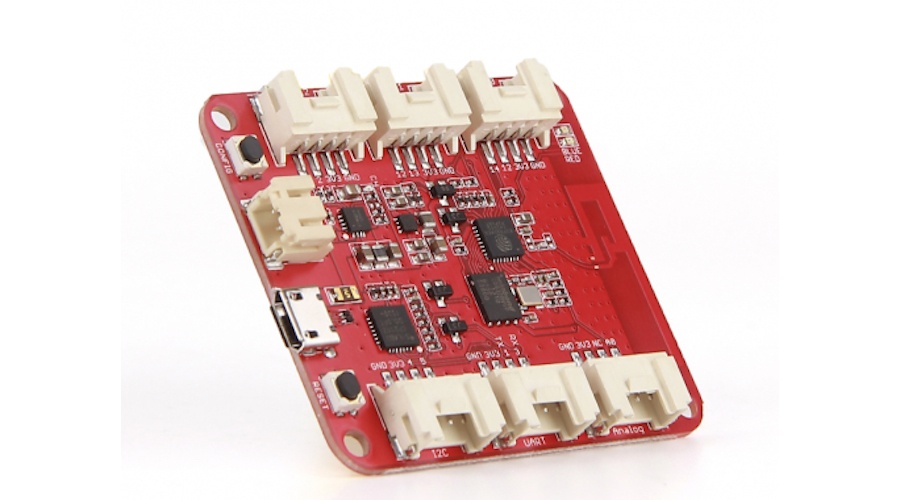
The $14 Wio Link, currently being crowdfunded by Seeed Studio, is a new and interesting dev board innovation that's worth a look. It's a Grove-compatible, ESP8266-based board that doesn't need a breadboard. Everything is integrated into the board itself.
The $14 price is very reasonable considering you don't have the additional cost of a breadboard. One of the biggest benefits of the wio link is the “grove kit” connectors that make it really easy to connect to all of the existing sensors that Seeed ships.
Setup and documentation appear solid, though we haven't had a chance to get our hands on one since the Kickstarter campaign just recently started shipping to backers.
Benefits
- Innovative "no breadboard" concept
- LiPo battery connector
- Simple setup with good instructions and support
It's an exciting time for hardware with platforms like the ESP8266 creating numerous options for reasonably priced, highly capable dev boards. We're looking forward to seeing even more capabilities coming from the ESP32.
I'd love to hear any thoughts or feedback on your experience with these or any other ESP8266-based dev boards.

